"We don't know how to define it. But there's something distinct about French car culture. It's encoded in the machinery that is made, designed and consumed in France, too. Here are five objects that put clear water between the culture "

Driving Peugeot’s 308 Racer
Can a Peugeot 308 really perform on track?
Since I was a child I’ve always loved the idea of being a driver.
I recently received an invitation from Peugeot to test the new 308 GTi at Ascari Circuit, which was appealing enough, but spotted that it also included trying a new race-prepared Peugeot on the longest and toughest circuit in Spain: the 308 Racing Cup. Of course, the answer was ‘yes’.
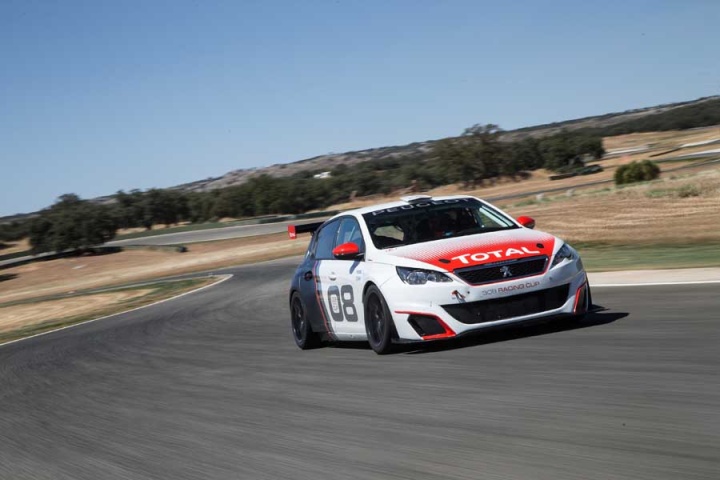
It was 43ºC outside, and Ascari’s nephew, who I had interviewed at the Millemiglia, sent me a message “Enjoy and let me know about your amazing experience!”. I was as excited as a demented world leader with his hand hovering over the red button. The Peugeot 308 Racing Cup is derived from the latest 308 GTi. It weighs 1,100kg, and has the same 1.6 litre turbocharged engine, but here delivers 308hp, with a power-to-weight ratio of 280hp/tonne or 3.6kg per hp. It’s 4,280 mm long, without WTCC wings, and 1,910 mm wide and has different bumpers and wheel arches from the GTi. Currently the grille and the air intake are shared with the pre-facelift 308, but they will be updated soon.
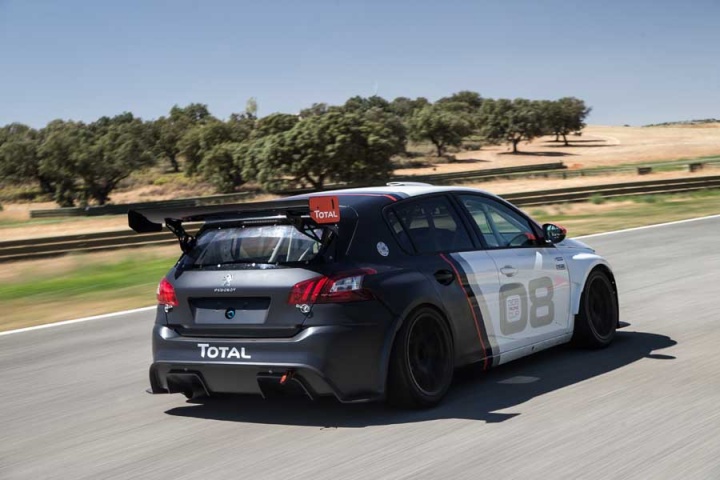
The Peugeot 308 Racing Cup has many adjustable components, and it’s eligible to run in several European championships: such as Silverstone 24h, TCR championships and even on road, in the CIVM, the Italian Speed Mountain Championship. Clad in racing overalls, shoes, gloves, and helmet, I pulled the zip up to my neck and go outside to the blazing sun.
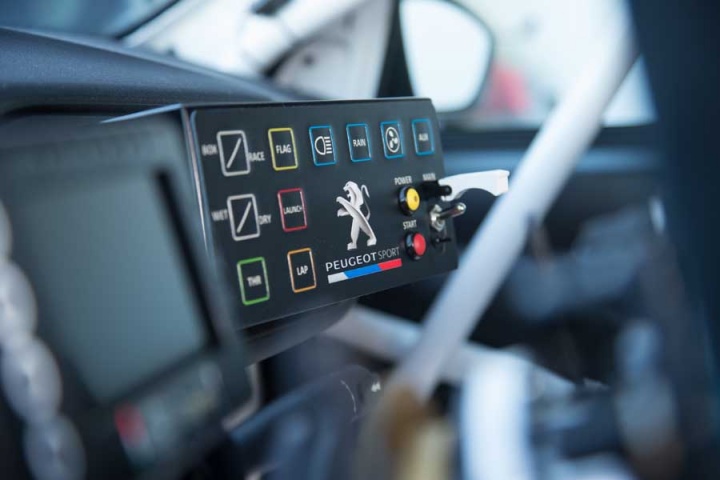
Getting into the car for someone of 5ft 11in, takes a moment of contortion. My companion for the track drive is Charlotte Berton, a French rally champion. We agreed to speak in English, as my French is good, but not enough to talk about cars with 50ºC heat in the cabin.
“Everything OK?” She asked me. “Yes, except I can’t breathe,” I replied. The five point belts virtually paralysed me, but that’s how it is supposed to be.
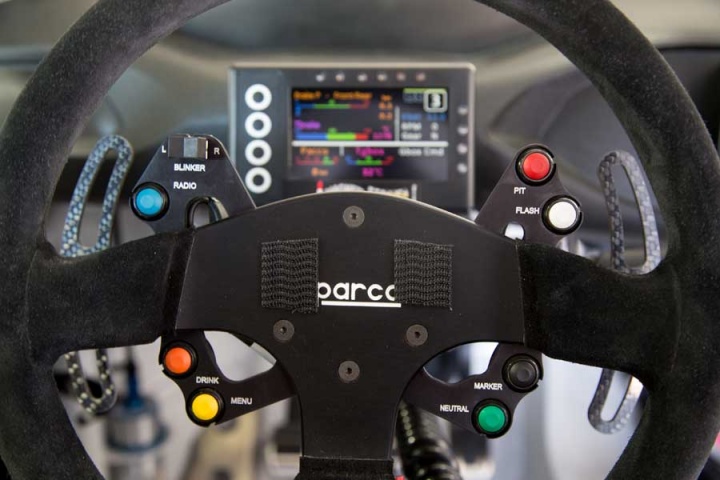
The 308 Racing Cup has a six-speed sequential automatic transmission with paddles. On the right, where the 308 GTi has the infotainment screen, there is a keypad, with various functions. For example, ‘Box’ cuts power by 70% and is pushed every time driving in and out of the pits.
“Start” – “Power”. The tuneful four-cylinder engine music invades the cockpit. Despite the hellish heat I thought I was in paradise.
I had noticed that the driver before me had a complicated start, and didn’t execute a smooth getaway. A symptom of the clutch knockoff and the engine needing high rpm before releasing it.
Fortunately, I was better prepared and made a good departure. The stability of the 308 Racing Cup is noticeable at the first curve. You feel the huge rear wing working, which literally pastes the tail to the ground.
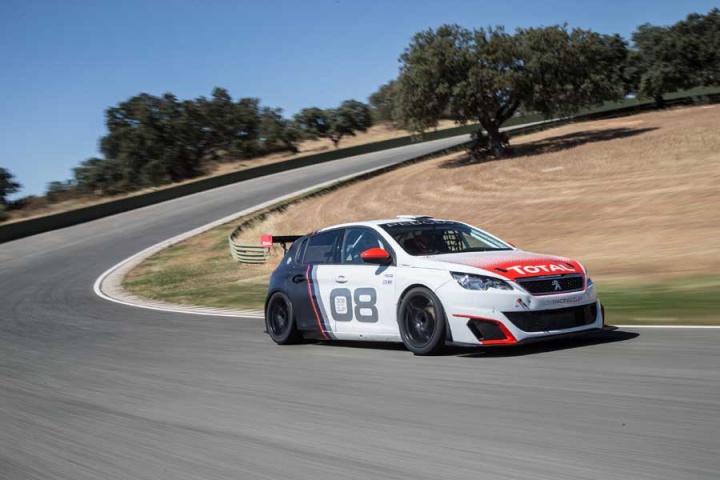
One curve and then the other, following Charlotte’s prompts on gearshifts makes everything easy. I caught the other 308 Racing Cup on the track, with Charlotte telling me to overtake, with speed increasing to the only point on the track where you can engage fifth gear.
While it had seemed easy so far, here I encountered my first problem: braking at high speed.
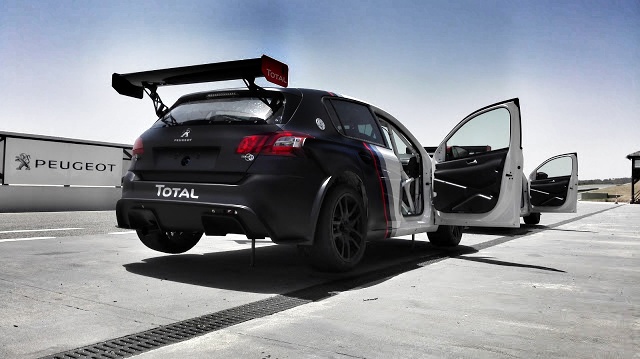
It requires such force on the pedal. If you used the same pressure to slam on the brakes with the 308 GTi, you wouldn’t even have started braking with the Racing Cup. You need to be trained and prepared. My entrance to the narrow corner wasn’t my best . . .
With more laps I became more and more confident with the brake pedal, and at every turn I was amazed at how stable and easy the car was to drive.
I didn’t want to return to the pits, but my time had come to an end. The 308 Racing Cup makes you forget about everything. Even that you’re losing kilos of body weight through sweat. And, of course, I want to do it again.
The price? 74,900 euros (£66,600), excluding taxes. Higher than a 308 GTi, of course, but designed to provide high performance combined with a low operating cost for racing.
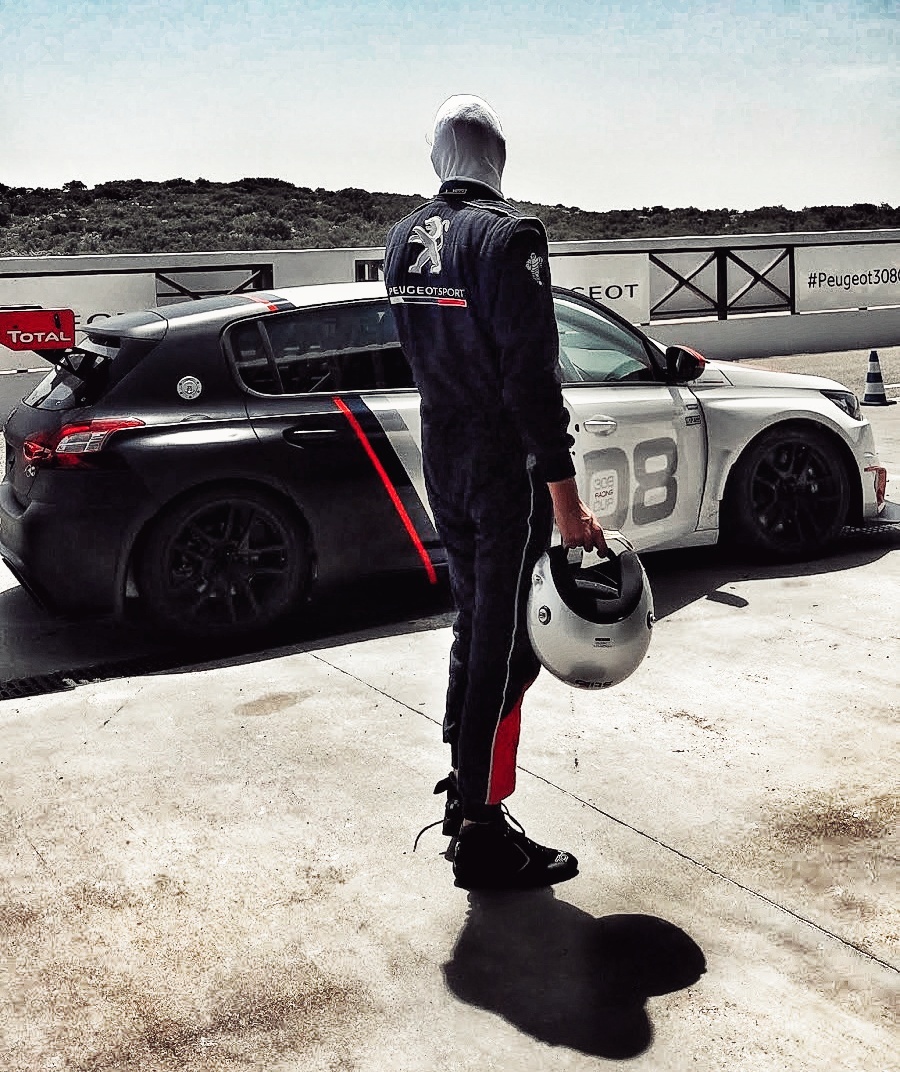
CLICK TO ENLARGE









